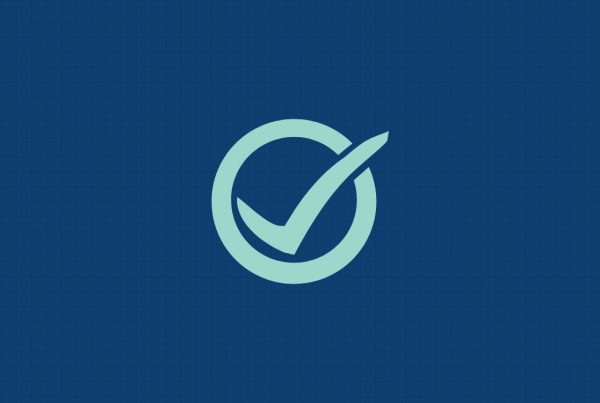In Part 1 (DiFi or Die Trying: A Quick and Dirty Overview of Digital Finance), we discussed the digital financial ecosystem that grew from the ashes of the financial wildfire that spread across the world in 2008.
Here in Part 2, we discuss how regulators are grappling with the task of keeping weeds out of the digital garden. Since their approaches and speed by which they tackle this task differ and are evolving, it is as important to stay focused on the regulators, as it is to stay focused on the innovators. Regulatory Knowledge Automation from Ascent can rapidly bring both into your clear line of sight. Keep reading for a better understanding of the regulatory landscape around DiFi.
INFOGRAPHIC: Regulatory Knowledge Automation, Explained
—
Regulation in the United States
Although ‘digital assets’ is a broad term applied across economic sectors, this discussion focuses on the financial services sector and, within that sector, crypto assets. This is because crypto assets (and specifically cryptocurrencies) have been given the most attention by regulators to date. Here’s a rundown of major events in recent weeks:
» May 17th — The FDIC issued a Request for Information and Comment on Digital Assets to learn how depository institutions interact with the cryptocurrency sector, how they might interact with the sector in the future and what, if anything, the FDIC should be doing about it. Questions the FDIC posed included ones relating to digital asset custody, coin issuance, trading, settlement and payment and regulatory supervision of digital finance activities.
» May 19th — In testimony before the U.S. House Financial Services Committee, OCC Acting Comptroller of the Currency listed adapting to digitalization as the third of four challenges requiring the OCC’s immediate attention. She emphasized that disintermediation is occurring in bank payments processing by FinTechs and technology platforms utilizing application programming interfaces, machine learning and distributed ledgers. Proof positive is OCC approval of two national trust charters for crypto platforms (Protego and Anchorage) within the past six months, and applications pending for at least two more (BitPay and Paxos).
» May 20th — Federal Reserve Chair Jerome Powell discussed the Fed’s response to technological advances driving rapid change in the global worlds of payments, banking and finance (including allowing FinTechs access to the Fed’s payment system under proposed guidelines).
On the other side of the house of federal regulators in the United States, the chairs have been rearranged, but who has jurisdiction over digital assets remains a persistent question. Breakdancer (pause while you check out the YouTube video) and former CFTC Gary Gensler is now chairing the SEC, while Rostin Behnam is acting chair of the CFTC.
While it is clear that the SEC regulates Initial Coin Offerings (ICOs), whether a digital asset in a specific use case should be treated as a security, a currency, a commodity or something else is more murky, despite recent SEC guidance on how to apply the long standing “Howey” test for defining a security.
Read More: Crypto Regulation and Changing of the SEC Guard
SIFMA’s May 20th reaction to SEC guidance on applying broker-dealer custody rules to digital assets addresses work in other critical areas of securities regulation that remains to be done i. Meanwhile, the CFTC launched its LabCFTC in 2017, both to encourage fintech innovation and inform CFTC thinking about its regulation. To date, LabCFTC has made the agency’s guidance more accessible, but it has been no substitute for consensus among regulators and a coordinated approach.
Despite deliberate efforts by federal regulators to modify their rulesets for a digital world, important questions remain, including whether, how and who should regulate digital asset platforms, exchanges, traders, managers and advisers, asset repositories and transmitters, pooled products, derivatives and associated sales and marketing activities (especially those directed at retail consumers).
Further, at least some activities involving digital financial assets are regulated at the state level, where answers are distinct and could differ materially from answers at the federal level. As this March 2020 article explains, state money transmitter rules are an especially acute pain point for digital marketplace participants.
Read More: A Look at Money Transmission Laws + How To Know Your MTL Obligations
Regulation Outside of the United States
In 2014, the United States Law Library of Congress published a report on the regulation of cryptocurrency across forty countries and the European Union. In 2018, the report was expanded to cover 130 countries. The report seeks to determine how various countries are responding to the fast-growing cryptocurrency market, discern regulatory trends and organize data for region-specific comparisons.
In 2019, a separate, more focused, report was published discussing regulatory approaches in the context of financial market and investor protection laws in 46 jurisdictions, as well as providing updated information on relevant tax and AML/CFT laws. These reports reveal a number of countries are applying existing rulesets to crypto assets, while at least a dozen countries have enacted new laws specifically governing crypto assets.
In April 2020, China became the first major economy to pilot a central bank digital currency (CBDC) with the number of pilots in other countries surging to 19 as of May 2021.
Stay ahead of the curve with Ascent
Meanwhile, the digital asset industry is not standing still while regulators work to catch up. Instead, they are shifting from ‘pushing back’ to advocating for ‘smart’ regulation that can be operationalized cost-effectively and aligned with developing industry best practices and principles.
Both innovation and regulation within the digital ecosystem are likely to occur at a rapid pace for the foreseeable future, making Ascent an essential tool for those seeking to discern and understand complex and challenging compliance obligations.
Ascent’s AI-driven technology rapidly and accurately maps obligations to your specific business and automatically keeps them updated as rules change. By automating the tedious process of regulatory research, analysis, and change management, Ascent gets you 90% of the way there in knowing what you need to do in order to stay compliant. That means your team can focus on the most critical, most human, 10% — reviewing and interpreting the output and strategic decision-making.
Interested in learning how Ascent can help you eliminate risk with a single source of regulatory truth? Contact us for a custom demo.
About the Author | Jilaine Bauer is Senior Compliance Consultant at Ascent. Previously, Jilaine worked as a Compliance Officer responsible for regulatory change management at one of the world’s largest providers of financial market data and infrastructure, as an independent regulatory consultant within the financial services industry sector and as general counsel and compliance officer to multi-faceted financial services firms. She holds a law degree from Loyola University (Chicago) and a degree in psychology from the University of Illinois Urbana-Champaign. She also has corporate, advisory and nonprofit board experience. Connect on LinkedIn.
Subscribe below to get helpful articles and thought leadership that helps you stay at the forefront of compliance and technology.







